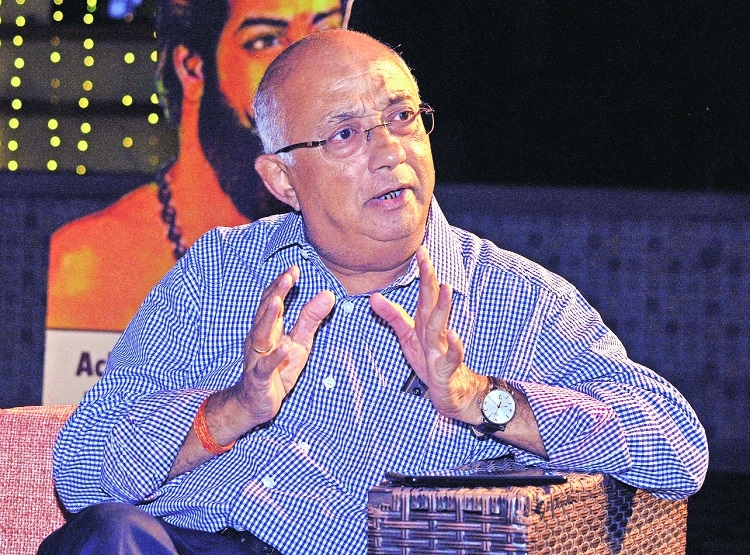‘Contemporary Hindu architecture must be apart of school syllabus’
| Date :22-Oct-2024 |

Nikhil Sompura in conversation with ‘The Hitavada’. (Pic by Anil Futane)
By Kaushik Bhattacharya :
Asserts Nikhil Sompura,
son of Chandrakant
Sompura who prepared
the original design of Ayodhya Ram Mandir
“FOR me and my family, designing Hindu temples is like worshipping God. It is a spiritual journey for us which starts from bhoomipujan and continues till inauguration of the temple,” stated Nikhil C Sompura, renowned Hindi Temple Architect and elder son of Chandrakant Sompura, the man who prepared the original design of Ayodhya Ram Mandir.
The inauguration of Ram Mandir in Ayodhya at the hands of Prime Minister Narendra Modi had become a festival of sorts in the country early this January. But the celebration for Chandrakant Sompura had commenced almost three decades ago when he was given the responsibility by the then chief of Vishwa Hindu Parishad (VHP), Ashok Singhal, to design the temple.
Nikhil Sompura was in the city to receive the prestigious ‘Vishwakarma Puraskar’ of the Saptarshi Puraskar on behalf of his father.
The awards are presented by Hindu Research Foundation.
The Sompuras, a community in Gujarat, bring forth the ‘Nagara shaili’ in their design, evident through their work across northern and western India, including Somnath temple, Swami Narayan Temple, Ambaji Temple, and now Ayodhya Ram Mandir, Nikhil Sompura told ‘The Hitavada’.
All the existing Birla Temples in the country and outside the country are constructed by Chandrakant B Sompura and his sons Nikhil and Ashish. “Industrialist Ghanshyam Das Birla recommended my father’s name to Ashok Singhal for this opportunity,” said Nikhil. He is currently working on many temple projects all over the world including Birla, Ambani and Adani projects.
Mentioning the contributions of his family in making of Hindu temples and following the contemporary Hindu architecture, Nikhil Sompura said, “Our great-grandfather Prabhakarji Sompura was the architect of the iconic Somnath Temple in Gujarat, the first temple built in independent India. He has penned nearly 154 books describing the expertise of Shilpa Shastras.
He also translated all ancient books of contemporary Hindu architecture into Hindi and Gujarati languages to spread them among masses.”
According to Nikhil Sompura, the 3-storey Ayodhya Ram Temple has 318 pillars with 106 pillars on each floor. All these pillars were designed in accordance with Hindu mythology. Spread over 69 acres, this will be the only temple in the world with five domes and it is constructed to bear about 30 Magnitude earthquakes.
While comparing modern architecture with ancient Hindu architecture, Sompura said, “Modern architecture uses steel and concrete for construction which can give a life of 100-150 years to a building whereas in ancient Hindu architecture, there was no use of steel or metal. Every building is constructed by stone carving and instead of metal, we use brass, copper and bronze at some level.”
“In Ayodhya Ram Mandir, too, we have used stones only. No steel was used to construct the temple. With this ancient Hindu technology, the Ayodhya Temple will survive at least 2,500 years at any cost,” claimed Sompura.
The architect of the Ayodhya Ram Mandir further said, “In last decade, some State Governments have included contemporary Hindu architecture as a subject in their syllabus. However, the Centre should make it compulsory in all States.”